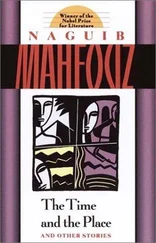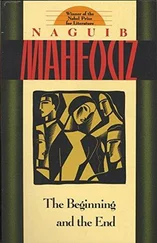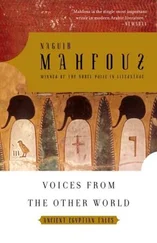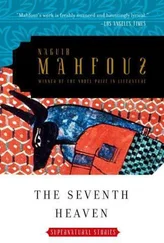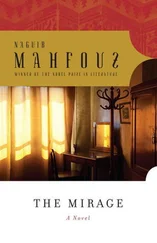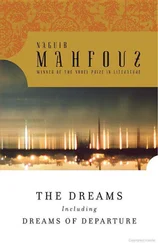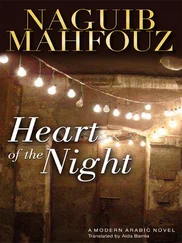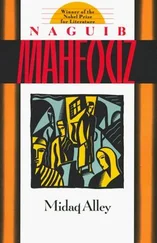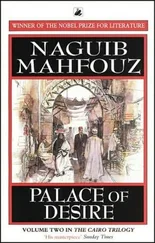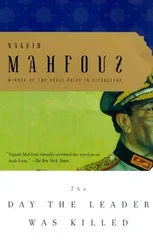Naguib Mahfouz - Before the Throne
Здесь есть возможность читать онлайн «Naguib Mahfouz - Before the Throne» весь текст электронной книги совершенно бесплатно (целиком полную версию без сокращений). В некоторых случаях можно слушать аудио, скачать через торрент в формате fb2 и присутствует краткое содержание. Год выпуска: 2012, Издательство: Anchor, Жанр: Современная проза, на английском языке. Описание произведения, (предисловие) а так же отзывы посетителей доступны на портале библиотеки ЛибКат.
- Название:Before the Throne
- Автор:
- Издательство:Anchor
- Жанр:
- Год:2012
- ISBN:нет данных
- Рейтинг книги:3 / 5. Голосов: 1
-
Избранное:Добавить в избранное
- Отзывы:
-
Ваша оценка:
- 60
- 1
- 2
- 3
- 4
- 5
Before the Throne: краткое содержание, описание и аннотация
Предлагаем к чтению аннотацию, описание, краткое содержание или предисловие (зависит от того, что написал сам автор книги «Before the Throne»). Если вы не нашли необходимую информацию о книге — напишите в комментариях, мы постараемся отыскать её.
Before the Throne
Before the Throne — читать онлайн бесплатно полную книгу (весь текст) целиком
Ниже представлен текст книги, разбитый по страницам. Система сохранения места последней прочитанной страницы, позволяет с удобством читать онлайн бесплатно книгу «Before the Throne», без необходимости каждый раз заново искать на чём Вы остановились. Поставьте закладку, и сможете в любой момент перейти на страницу, на которой закончили чтение.
Интервал:
Закладка:
9 Tom Reiss, The Orientalist: In Search of a Man Caught between East and West (London: Vintage, 2006), 290.
10 Interview with Naguib Mahfouz, Maadi, February 13, 2002. Herman Te Velde, Seth, God of Confusion (Leiden: E.J. Brill, 1967), Chapter Two, 85 (the standard reference work on Seth), and David P. Silverman in the article, “Divinity and Deities in Ancient Egypt,” Religion in Ancient Egypt: Gods, Myths and Personal Practice , ed. Byron E. Shafer, authors John Baines, Leonard H. Lesko and David P. Silverman (Ithaca, NY and London: Cornell University Press, 1991), 44. However, J. Gwynn Griffiths in his “Osiris” entry in The Oxford Encyclopedia of Ancient Egypt , ed. Donald B. Redford (Cairo: The American University in Cairo Press, 2001), Vol. 2, 615–19, places Osiris’s origins in Upper Egypt, as most early images of the god depict him wearing the White Crown of the southern kingdom, though this seems a minority view.
11 Bojana Mojsov, Osiris: Death and Afterlife of a God (Oxford: Blackwell, 2006), 33.
For Seth’s prominence in the development of this concept in monotheistic religion, Peter Stanford, The Devil: A Biography (New York: Henry Holt, 1996), 20–23. See more on the sinister aspect of Seth in Marc Étienne, Heka: Magie et envoutement dans l’Égypte ancienne (Paris: Reunions des Musées Nationaux, 2000), 22–39.
12 J. Gwynn Griffiths, entry “Osiris,” Oxford Encyclopedia of Ancient Egypt , notes that, “Although the Pyramid Texts [afterlife texts found in pyramids of the Fifth Dynasty] do not provide a consecutive account of the Osiris myth, they abundantly supply in scattered allusions the principal details about his fate and especially his relationship with the deceased pharaoh,’ who is identified with him in the underworld.”
H. Te Velde, Seth, God of Confusion , Chapter Three, 6.
13 Vincent Arieh Tobin, Theological Principles of Egyptian Religion , foreword by Roland G. Bonnel (New York, Bern, Frankfurt am Main, Paris: Routledge Curzon, 2005), 22, notes that the myth was apparently only recorded in full form by the Greek biographer Plutarch, (46?–120?), probably with a Greek narrative and philosophical bias.
14 Richard H. Wilkinson, Complete Gods and Goddesses of Ancient Egypt (Cairo: The American University in Cairo Press, 2005), 148, describes Isis’ iconography, and says, “through her great power Isis was able to function as the protector and sustainer of the deceased in the afterlife.” This statement largely explains the role that Mahfouz assigns to the goddess in Before the Throne .
General description of Osiris Court trial scene in B. Mojsov, Osiris , xi. Osiris Court in the Book of the Dead , see Goelet, 101–35. For a harrowing account of the ordeal before the scales of Ma’at, see Dimitri Meeks and Christine Favard-Meeks, Daily Life of the Egyptian Gods , translated from French by G.M. Goshgarian (Ithaca and London: Cornell University Press, 1993), 142–50. For finds at Bahariya, see Zahi Hawass, The Valley of the Golden Mummies (Cairo: The American University in Cairo Press, 2000), and his article, “The Legend of the Pharaoh’s Lost Tomb: A Tale from the Valley of the Golden Mummies,” in The Massachusetts Review (Winter 2002), special Egypt issue, 475–88. Also, Raymond Stock, “Discovering Mummies,” Egypt To day , July 1999, 64–69. For Osiris in other texts of the afterlife, see Bojana Mojsov, “The Ancient Egyptian Underworld in the Tomb of Sety I: Sacred Books of Eternal Life,” in The Massachusetts Review , 489–506, and in Osiris , 58, 83–93. James P. Allen relates the origin and meaning of “hieroglyphs” in Middle Egyptian: An Introduction to the Language and Culture of Hieroglyphs (Cambridge and New York: Cambridge University Press, eleventh printing, 2007; first published 2000), noting the term is derived on the Greek for “sacred carvings,” 2.
Najib Mahfuz, Amam a al-‘arsh: Hiwar m a‘a rijal Misr min Mina hatta Anwar al-Sadat (Cairo: Maktabat Misr, 1983).
15 John Baines and Jaromir Malek, Atlas of Ancient Egypt , Revised Edition (Cairo: The American University in Cairo Press, 2005), 226.
16 Akef Ramzy Abadir, Najib Mahfuz: Allegory and symbolism as a means of social, political and cultural criticism, 1936–1985 ; PhD dissertation, Department of Near Eastern Languages and Literatures, New York University, 1989 (Ann Arbor: University Microfilms International, 1990), 166–67.
17 Raja’ al-Naqqash, Najib Mahfuz: Safahat min mudhakkiratih wa adwa’ jadida ‘ala adabihi wa hayatih (Cairo: Markaz al-Ahram li-l-Tarjama wa-l-Nashr), 176 and 178.
18 Published in Arabic as al-‘A’ish fi-l-haqiqa , and in English, Akhenaten: Dweller in Truth by Naguib Mahfouz, translated by the Tagried Abu Hassabo (Cairo: The American University in Cairo Press, 1998) and by Vintage Anchor in New York in paperback in 2000. For how the ancient Egyptians might have answered this question, see Erik Hornung, translated from the German by John Baines, Conceptions of God in Ancient Egypt: The One and the Many (Ithaca, NY: Cornell University Press, 1982).
19 David O’Connor, “Egypt’s View of ‘Others,” in ‘Never Had the Like Occurred:’ Egypt’s View of its Past , ed. John Tait (London: UCL Press, Institute of Archaeology, University of London, 2003), 155–85.
20 For the Pharaonist movement’s views of Egypt as an empire, see Charles Wendell, The Evolution of the Egyptian National Image: From its Origins to Ahmad Lutfi al-Sayyid (Berkeley, Los Angeles, and London: University of California Press, 1972), 236–37, and for the movement as a whole and Mahfouz’s connection to it, see R. Stock, A Mummy Awakens , 40–61.
21 Naguib Mahfouz’s Nobel lecture, translated into English from the Arabic and delivered in both languages by Mohamed Salmawy in Stockholm, December 8, 1988, reprinted in The Georgia Review (Spring 1995): 220–21.
22 Interview with Naguib Mahfouz and Yoram Meital, Maadi, Cairo, March 1998.
23 For an analysis of Before the Throne , see Menahem Milson, Najib Mahfuz: The Novelist-Philosopher of Cairo (New York and Jerusalem: St. Martin’s and Magnes Press, 1998, 144–53.)
24 Children of the Alley , translated by Peter Theroux (New York: Doubleday, 1996) and the American University in Cairo Press in paperback (Cairo, 2001), first translated by Philip Stewart as Children of Gebelawi (London: Heinemann, 1981).
25 Raymond Stock, “How Islamist Militants Put Egypt on Trial, The Financial Times , Weekend FT, March 4/5, 1995, III.
26 R. Stock, A Mummy Awakens , 20–21, and Ayman al-Hakim, “Najib Mahfuz mata wa huwa yuhibbu Isra’il!” al-Idha‘a wa-l-tilifizyun , December 30, 2006, 84–85.
Rasheed El-Enany , Naguib Mahfouz: The Pursuit of Meaning (London: Routledge, 1993), 210.
27 For quotation, see Thomas L. Friedman, “I Am a Man,” The New York Times , May 15, 2011. For more on the connection between this novel and the recent dramatic changes in Egypt, see David Remnick, “Judgement Days,” in “The Talk of the Town,” The New Yorker , February 14, 2011, and Raymond Stock, “Egypt’s Revolution Foreseen in Fiction: Before the Throne by Naguib Mahfouz,” Foreign Policy Research Institute, May 2011. These articles refer to the 2009 American University in Cairo Press hardcover edition of the novel.
28 The Day the Leader was Killed by Naguib Mahfouz, translated by Malak Hashem (Cairo and New York: The American University in Cairo Press, 1997).
Читать дальшеИнтервал:
Закладка:
Похожие книги на «Before the Throne»
Представляем Вашему вниманию похожие книги на «Before the Throne» списком для выбора. Мы отобрали схожую по названию и смыслу литературу в надежде предоставить читателям больше вариантов отыскать новые, интересные, ещё непрочитанные произведения.
Обсуждение, отзывы о книге «Before the Throne» и просто собственные мнения читателей. Оставьте ваши комментарии, напишите, что Вы думаете о произведении, его смысле или главных героях. Укажите что конкретно понравилось, а что нет, и почему Вы так считаете.

